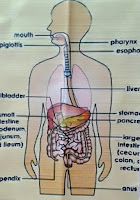Respiratory Failure Definition, Respiratory Failure Signs, Symptoms And Overcome Respiratory Failure
10/8/18
Edit
Respiratory Failure Definition, Respiratory Failure Signs, Symptoms And Overcome Respiratory Failure
The Respiratory Failure Definition is breath respiratory system is the inability to maintain normal blood oxygenation (PaO₂), elimination of carbon dioxide (C₀Pa₂) and adequate Ph caused by ventilation problems of diffusion or perfusion. failed the breath is the failure of the respiratory system to maintain the exchange of carbon dioxide in the amount of oxygen that can result in disorders of the life.
Respiratory Failure occurs when changed oxygen against carbon dioxide in the lungs are unable to maintain the rate of oxygen consumption and carbon dioxide formation in the cells of the body. thus causing the oxygen tension less than 50 mmHg (Hipoksemia) and an increase in the carbon dioxide pressure greater than 45 mmHg (Hiperkapnia).
8 Sign And Symptoms Of Respiratory Failure Or Clinical Manifestations Of Respiratory Failure
- cyanosis (bluish)
- tachycardia
- breathing fast and deep
- feel the pain
- many diaphoretic
- restless
- talk is so messed up
- retraksi chest
The Anatomy Physiology Of The Respiratory
Nasal Cavity
nose or nasal airway is first, had two Calumniation separated by septum-nation
The Pharynx
the pharynx is the crossing between the breath and street food
The Larynx
the larynx is the air duct which acts as voice sharper
Epiglottis
epiglottis is the valve to shut down the respiratory tract while eating
Trachea
trachea of 16-20 rings are shaped like a horse and a not consisting of bone-cartilage
Bronchial
bronchus is a branch of the throat
Bronchiolus
bronchiolus is fork of bronchus
Alveolar
alveolar is where the exchange between oxygen and carbon dioxide
Pleural
the pleura is a liquid that wraps the lungs
5 Causes Of Respiratory Failure Or Etiology of Respiratory Failure
- depression the central nervous system
- a primary neurological disorder
- pleura effusion, haemotoraks and pneumotoraks
- trauma
- acute lung disease
Pathophysiology Of Respiratory Failure
there are two kinds of respiratory failure, that respiratory failure acute and chronic respiratory failure which each have different sense. acute respiratory failure is failure breath arising in patients whose lungs normal structurally nor functionally before a wit an disease arise.
while chronic respiratory failure such as chronic emphysema and pulmonary disease black (coal-miners disease). patients experiencing the tolerance of hypoxia and hipercapnia which form gradually.
after respiratory failure due to lung usually returns the specificity comes from. on respiratory failure chronic, lung structure suffered damage that is irreversible.
the indicator respiratory failure frequency and capacity has been vital, normal breathing frequency was 16-20x per minute. when more was 20 x per minute actions taken giving works because respiratory ventilator be high so arising are exhausted. vital capacity is the size of the vents (normal 10-20 ml per gram).
the most important cause of respiratory failure ventilation is not adequate where breath respiratory airway occur above respiratory control center located under the brain stem (pons and medulla)
in the case of patients with head injuries, anesthetic, stroke, brain tumors, encephalitis, meningitis, hypoxia and hypercapnia, have the ability to suppress the respiratory center, so breathing became slow and shallow.
in the period of post operative agents suppress breathing to the effect that are issued or by increasing the effect of analgesic opioid. pneumonia or lung disease can lead to acute respiratory failure.
4 Respiratory Failure Complications
- metabolic acidosis
- infection
- the failure of weaning mechanical ventilation (ventilator)
- the low intake of the adequate nutritions
4 Diagnostic Examination RespiratoryFailure
- examination of arterial blood gases
- the chest x-ray examination
- haemodynamic
- ECG
5 Respiratory failure Medical Treatment
- oxygen therapy
- mechanical ventilator by giving positive pressure continue
- inhalation nebulizer
- the treatment; bronchodilator
- steroids
4 Nursing Management
- examine the respiratory status (frequency of breath, the sound of the breath)
- chest physiotherapy
- haemodynamic monitoring
- nutritional support as needed.
